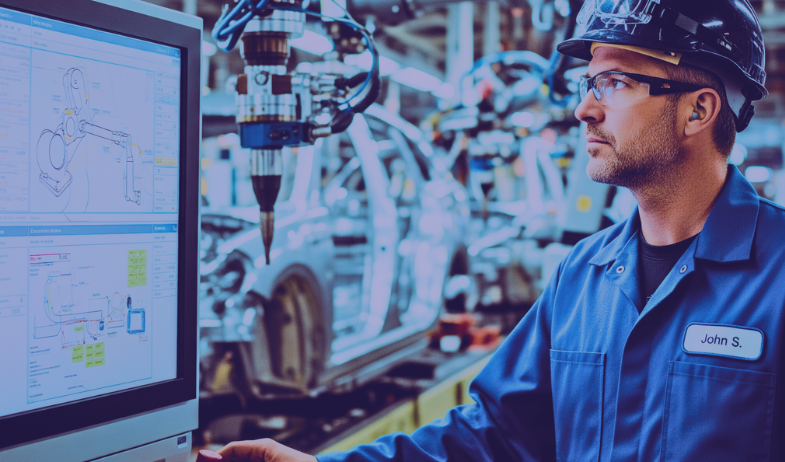Table of Contents

By Mike Minelli
For automotive leaders seeking throughput-driven revenue growth
The Revenue Problem Isn’t Demand — It’s Capacity
Automotive suppliers and OEMs are under growing pressure to meet escalating volume requirements while absorbing volatility in labor, lead times, and costs. For many, customer demand isn’t the constraint — production capacity is.
Revenue growth is directly tied to automotive throughput:
More parts produced per shift means more money on the table.
Yet time and again, we see manufacturers leave millions in untapped capacity on the line — not because of capital constraints, but because they lack real-time operational clarity.
The Line Isn’t the Problem. The Blind Spots Are.
Most plant leaders know where production is lagging:
- Station 3 is under cycle time.
- Changeovers are slow.
- Operators are behind target.
But knowing where isn’t the same as knowing why.
Here’s what that looks like in practice:
- A line is underperforming.
- Multiple teams investigate.
- Each has a different theory.
- Fixes are applied… with little to no effect.
- Throughput stays flat.
- Time is lost. Again.
This isn’t due to a lack of effort — it’s due to a lack of visibility. Most plants only track performance at the station level, but a station is not a single unit. It’s a collection of assets, each composed of multiple devices that can independently introduce delays.
If your systems only tell you that “Station 3 is underperforming,” you’re too late — and too high-level — to act.
Manufacturing Visibility Gaps Cost Millions
Industry data shows that the average plant operates at just 60–70% OEE, while top performers operate above 85%. That gap represents a massive revenue opportunity — not through additional machines or automation, but by better leveraging existing capacity.
At the same time, ABB reports that 69% of industrial businesses experience unplanned outages at least once a month, costing an average of $103,000 per hour of downtime.
These are not theoretical losses. They’re daily leaks in throughput and profit.
Why Most Systems Stop at the Station
Many plants rely on legacy MES or SCADA systems that aggregate data at the workcell or machine level. These platforms tell you what’s happened — but not why, when, or where within the station the delay originated.
That leaves engineers digging through logs, operators reacting without context, and supervisors chasing metrics without root causes.
What’s lost isn’t just time. It’s a revenue opportunity.
Throughput Gains Without CapEx
Manufacturers often assume increasing output requires new equipment, new lines, or expensive automation. But in many cases, the line can run faster today — the opportunity is buried in micro-stoppages, blockages, and inefficient asset coordination.
The key is surfacing those constraints in real time.
That’s what BEET enables.
By layering asset-level intelligence over your existing systems, BEET helps operations teams:
- Detect blocked, starved, or idle assets immediately
- Visualize offloads and bottlenecks across the line
- Identify cycle-time deviations down to the asset or shift
- Drive corrective action in minutes — not hours
And critically, it empowers frontline workers with the same live performance data leadership sees — so action can happen without escalation.
Empowerment Drives Execution
The best frontline teams don’t need more dashboards — they need clarity and autonomy. BEET equips operators, leads, and engineers with live visibility into their area’s performance — and what’s holding it back—so they can respond immediately.
That’s how you convert delays into decisions — and decisions into throughput.
Capacity is Already There. It Just Isn’t Visible.
In high-mix, high-pressure environments like automotive manufacturing, throughput equals revenue. But you can’t optimize what you can’t see.
Most digital systems stop at the station. The BEET Platform goes deeper — giving you and your teams the visibility to unlock the line you already own.
Faster response. Fewer delays. More parts. More revenue.

